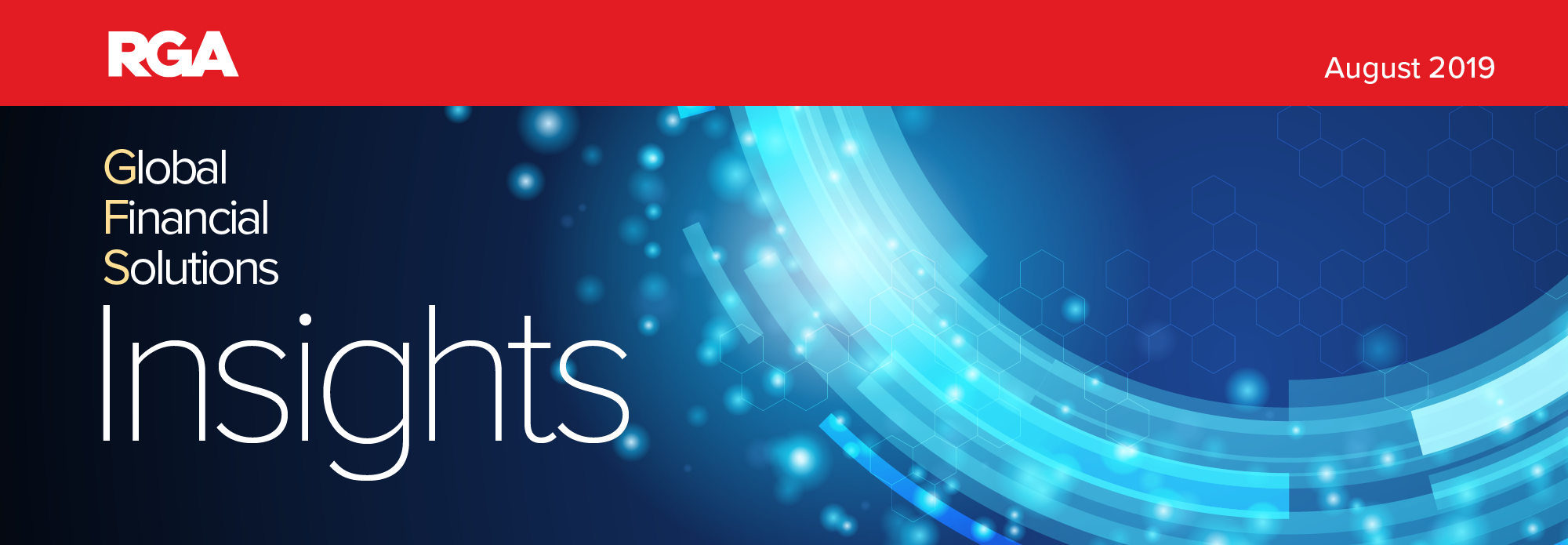
U.S. Market for Pension Risk Transfer Reinsurance Transactions Opens Up
The pension risk transfer (PRT) market has been well established outside the U.S. for many years. More recently the U.S. market has seen a steady growth in transactional volume, but to date no insurer assuming these liabilities has reinsured any of the business. In 2018 RGA completed what we believe to be the first longevity-only reinsurance transaction executed in the United States. The transaction, which transferred the longevity risk in a client’s in-force PRT book, with a present value of benefits of just under $1 billion was transformational because it proved that there is a market for longevity-only reinsurance.
The reinsurance transaction took the form of a swap (although not a derivative) where the cedant pays the reinsurer a negotiated “fixed leg” (expected benefit payments plus a load) that is netted against RGA’s payment of actual reinsured benefits. The net payment, which can go in either direction, is typically modest.
 Bill Boyd, VP Business Development
Bill Boyd, VP Business Development
As we prepared to enter this business, we were consistently warned by players in the PRT industry about the poor quality of PRT data coming from plan sponsors. Our client engaged in a rigorous exercise to sanitize its data, such that as a reinsurer we were using a cleaner data set than the cedant had initially bid on. This data cleansing enabled RGA to reduce the required PAD for information deficiencies, and as the market evolves, this is suggestive of the benefits that improved information can bring to the broader market.
There is no asset transfer per se associated with a longevity only transaction. It is conceivable that assets could be transferred in the future if the obligations of one side to the other become material and seemingly irreversible. An explicit collateral provision was implemented to codify this.
In developing this pioneering transaction in the U.S., we relied heavily on the experience of our associates in the UK, who have been completing longevity-only reinsurance transactions regularly since 2007. There were no significant differences between this transaction and a comparable deal executed in the UK.
One notable element of risk in the U.S., aside from the quality of data, is the absence of statutory guidance in determining an appropriate reserve credit. Neither is such a transaction contemplated by risk-based capital as yet. Given the groundbreaking aspects of the transaction, it was key that the cedant cleared its proposed reporting of the transaction with its domiciliary regulator.
Among the key benefits for the cedant were a reduction in longevity exposure and to demonstrate market confidence in longevity pricing.
RGA anticipates that this will be the first of many longevity reinsurance transactions in the U.S. market. The underlying business is growing, and whereas much of the direct market demand is motivated by a desire to manage assets, the emergence of a robust longevity reinsurance market should enable competitive growth in the PRT space. RGA is also eager to discuss coinsurance of PRT business, either in force or flow. RGA has extensive experience as an asset-intensive reinsurer ($27 billion of account value at risk and growing). Such a transaction would decrease an insurer’s concentration in PRT in force, and may enable an insurer to compete for larger cases.